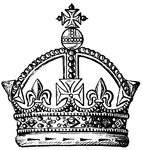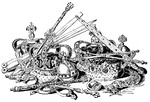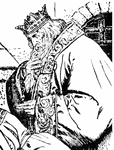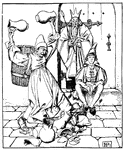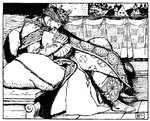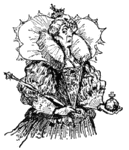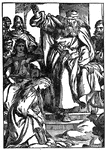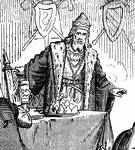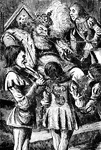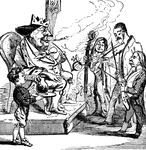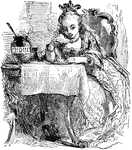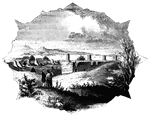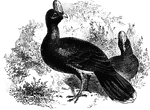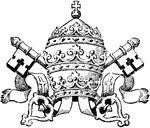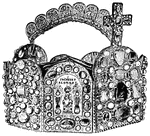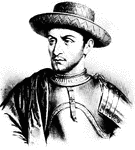
Louis XI of France
(1423-1483) King of France form 1461-1483 who united most of France under one crown. He also laid the…
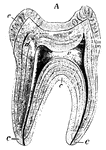
Human Tooth
A tooth is generally described as possessing a crown, neck, and root. Side view of a tooth.
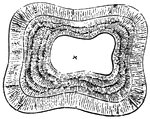
Human Tooth
A tooth is generally described as possessing a crown, neck, and root. Top view of a tooth.; 1. Central…
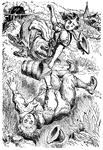
Jack and Jill
Jack and Jill went up the hill to fetch a pail of water. Jack fell down and broke his crown, and Jill…

Jack and Jill
Jack and Jill went up the hill to fetch a pail of water. Jack fell down and broke his crown, and Jill…
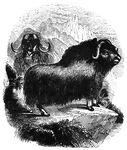
Musk Ox
"They frequent rocky regions desitute of woods, living on grass in the mild season and on lichens in…
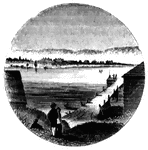
Chimney Point
Chimney Point Landing. This view is taken from the green in front of the inn at Chimney Point, looking…
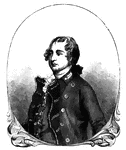
Sir Guy Carleton
Sir Guy Carleton, afterward Lord Dorchester, was Wolfe's quartermaster at the storming of Quebec, and…

Society of the Cincinnati
"Society of the Cincinnati, member's certificate. This engraving is a fac simile of a certificate, about…
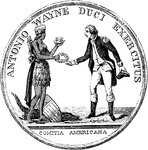
Wayne Medal Front
"Gold medal awarded by Congress to General Wayne. This is a representation of the medal, the size of…
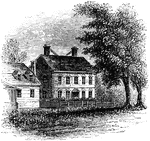
Nelson Mansion
"The Nelson Mansion. This view is from the street looking northwest. A long wooden building, with steep…
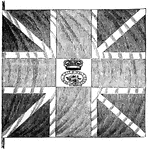
British Flag
"British flag. This is a representation of one of the flags surrendered at Yorktown, and presented to…

Washington Medal Front
"Silver medal awarded to Washington. The following are the device and inscriptions on the front: An…
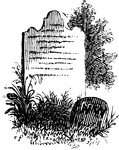
Woodhull's Grave
"Woodhull's Grave. Nathaniel Woodhull was born at Mastic, Long Island, December 30, 1722. Agriculture…
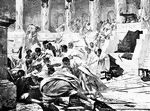
Caesar's Death
"The Death of Caesar. Naturaly such extraordinary success made him enemies, and though the city seemed…

George III, King of England
"George III (1760-1815). The first two Hanoverian kings were ignorant of English politics and obliged…

Steel Armet
"Steel Armet, about A.D. 1450. A, calotte or cap; a, neck-guard riveted to A, and having a prolongation…
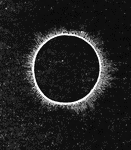
Corona of the Sun
"Corona (a crown) in astronomy is a halo or luminous circle round one of the heavenly bodies; specifically…
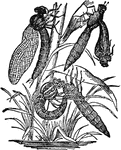
Dragonfly
"The Dragon Fly has a large, broad head, very freely attached to the thorax, and large, convex, prominent…

Goosander
"The Goosander is a web-footed bird in the duck family. The adult male, which measures 26 inches in…

Goosander
"The Goosander is a web-footed bird in the duck family. The adult male, which measures 26 inches in…

Iron Crown of Lombardy
"The Iron Crown was a golden crown, set with precious stones, with which anciently the kings of Italy,…
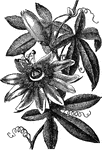
Passion Flower
"Pasiflora is the passion-flower. Generally climbing herbs or shrubs. Fruit succulent, seeds many. Found…
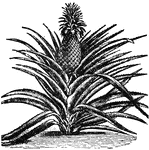
Pineapple
"Pineapple is a plant of the natural order Bromeliacæ. The flowers rise from the center of the…

Corona
"A crown, that is, a circular ornament of metal, leaves, or flowers, worn by the ancients round the…

Corona
"A crown, that is, a circular ornament of metal, leaves, or flowers, worn by the ancients round the…

Isthmian crowns
"The Nemian and Isthmian games occurred more frequently than the Olympic and Pythian. They were celebrated…
Tapeworm
"The Tapeworm is an intestinal worm, Tænia solium, in form somewhat resembling tape. Its length…
!["The Tapeworm is an intestinal worm, Tænia solium, in form somewhat resembling tape. Its length is from 5 to 15 yards, and its breadth from two lines at the narrowest part to four or five at the other or broader extremity. At the narrow end is the head, which is terminated anteriorly by a central rostellum, surrounded by a crown of small recurved hooks, and behind them four suctorial depressions; then follow an immense number of segments, each full of microscopic ova. The segments are capable of being detached when mature, and reproducing the parasite. There is no mouth; but nutrition appears to take place through the tissues of the animal, as algæ derive nourishment from the sea water in which they float. The digestive system consists of two tubes or lateral canals, extending from the anterior to the posterior end of the body, and a transverse canal at the summit of each joint. [Pictured] A single segment or proglottis magnified; 1, generating pore; 2, water vessels; 3, dendritic ovary."—(Charles Leonard-Stuart, 1911)](https://etc.usf.edu/clipart/16500/16595/tapeworm2_16595_mth.gif)
Tapeworm
"The Tapeworm is an intestinal worm, Tænia solium, in form somewhat resembling tape. Its length…
!["The Tapeworm is an intestinal worm, Tænia solium, in form somewhat resembling tape. Its length is from 5 to 15 yards, and its breadth from two lines at the narrowest part to four or five at the other or broader extremity. At the narrow end is the head, which is terminated anteriorly by a central rostellum, surrounded by a crown of small recurved hooks, and behind them four suctorial depressions; then follow an immense number of segments, each full of microscopic ova. The segments are capable of being detached when mature, and reproducing the parasite. There is no mouth; but nutrition appears to take place through the tissues of the animal, as algæ derive nourishment from the sea water in which they float. The digestive system consists of two tubes or lateral canals, extending from the anterior to the posterior end of the body, and a transverse canal at the summit of each joint. [Pictured] Head of tænia solium (enlarged)."—(Charles Leonard-Stuart, 1911)](https://etc.usf.edu/clipart/16500/16599/tapeworm3_16599_mth.gif)
Tapeworm
"The Tapeworm is an intestinal worm, Tænia solium, in form somewhat resembling tape. Its length…
!["The Tapeworm is an intestinal worm, Tænia solium, in form somewhat resembling tape. Its length is from 5 to 15 yards, and its breadth from two lines at the narrowest part to four or five at the other or broader extremity. At the narrow end is the head, which is terminated anteriorly by a central rostellum, surrounded by a crown of small recurved hooks, and behind them four suctorial depressions; then follow an immense number of segments, each full of microscopic ova. The segments are capable of being detached when mature, and reproducing the parasite. There is no mouth; but nutrition appears to take place through the tissues of the animal, as algæ derive nourishment from the sea water in which they float. The digestive system consists of two tubes or lateral canals, extending from the anterior to the posterior end of the body, and a transverse canal at the summit of each joint. [Pictured] A, ovum with contained embryo, B, Cystericus longicollis."—(Charles Leonard-Stuart, 1911)](https://etc.usf.edu/clipart/16600/16600/tapeworm4_16600_mth.gif)
Tapeworm
"The Tapeworm is an intestinal worm, Tænia solium, in form somewhat resembling tape. Its length…

